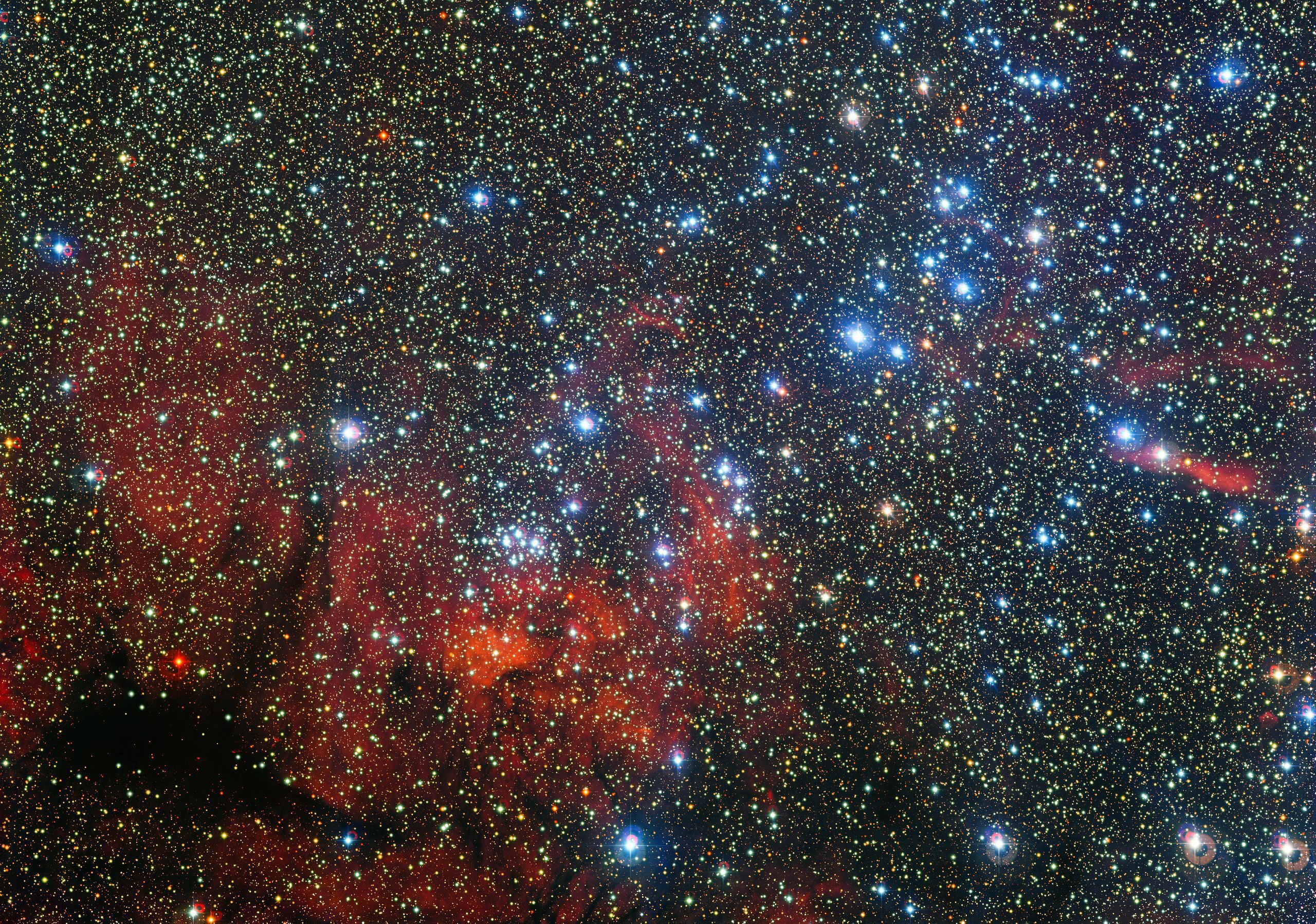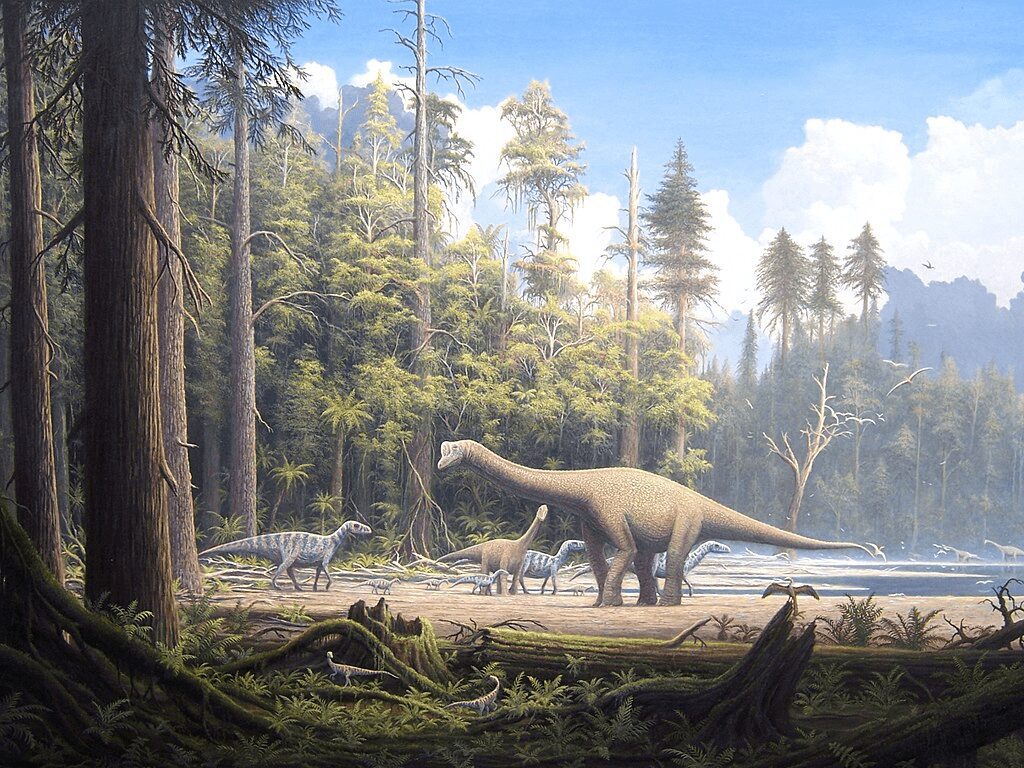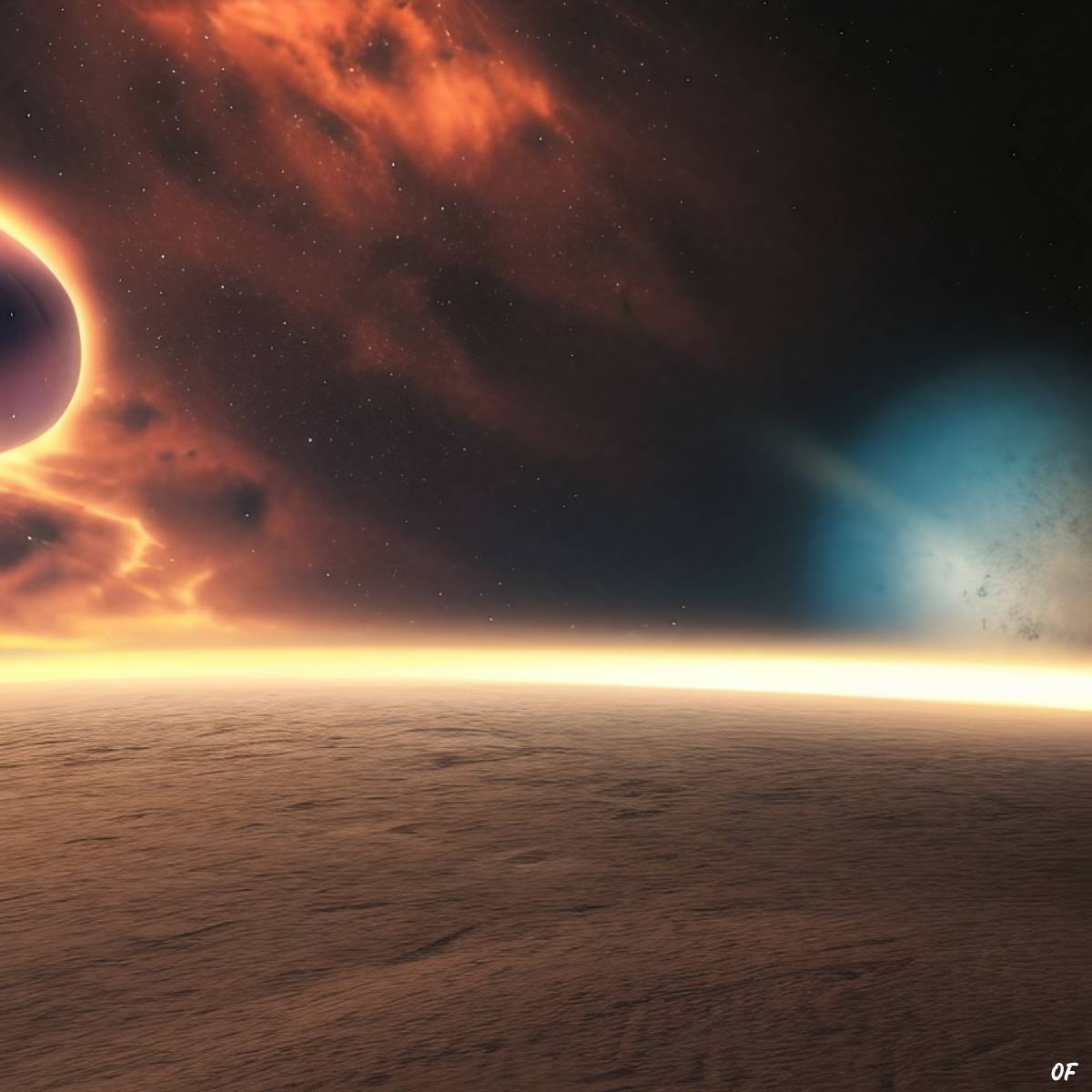The sheer size of the universe is apparent to anyone who goes outside on a dark, clear night. We have a wealth of stars in our sky, with several thousand visible at a time, and under good conditions, the cloudy expanse of the Milky Way testifies to our place in a truly vast cosmic community. But while thinkers and dreamers have long speculated that beings like ourselves might exist on other worlds, all the stars and planets we’ve observed are seemingly lifeless. So where are all the aliens? If the universe has had so many opportunities for life to emerge, why don’t we see a galaxy teeming with civilizations? This discrepancy, the Fermi paradox, has long troubled astronomers—read on to discover the sheer scale of the mystery and explore some possible solutions.

“Where is everybody?”
The Fermi paradox is named after Enrico Fermi, an Italian and later American physicist who spearheaded the development of the world’s first nuclear reactors during the 1940s. In 1950, during a lunchtime conversation with his colleagues, he discussed the likelihood of other civilizations in our galaxy. He posited that given the Milky Way’s considerable size, there had to be at least a few of them out there.
He believed such civilizations would tend to expand, claiming exponentially more territory as new colonies sent out expeditions of their own. A single intelligent civilization could encompass the entire galaxy in tens of millions of years. The fact that nobody had visited Earth yet prompted Fermi to ask the fateful question: “Where is everybody?” Looking at the expected abundance of intelligent life and its observed absence, he found himself unable to square the two. The Fermi paradox was born.
The Drake equation: A crowded cosmos?
Fermi did not have hard numbers when he proposed his paradox. It was up to astronomer Frank Drake to quantify the problem, proposing his eponymous Drake equation about a decade later. Given a long series of figures—the rate of star formation in the galaxy, the number of potentially habitable worlds in each solar system, the probability of life, the probability of intelligent life, the probability of advanced technology, and the average lifespan of a technological civilization—Drake thought it would be possible to determine the number of alien races that should be detectable to earthbound radio telescopes. The trick was figuring out values for all of those terms, which was, to some extent, a matter of guesswork.

Drake’s original assumptions yielded a lower bound of 20 civilizations and an upper bound of 50 million. That may sound like an enormous range, and it is, but consider the implications of even the lowest estimate: we’re looking at a galaxy with 20 advanced alien civilizations active at the same time. Each of these species would be capable of exponential growth, sending fleets of interstellar craft to colonize vast swaths of the Milky Way. Not all of them would do this, necessarily, but some would surely make the attempt—and it only has to happen a few times for the galaxy to become a crowded place. No matter how you slice it, the Drake equation implies that our stellar neighborhood should be bustling with activity.
Evidence for alien life
Now that we have established that there should be a wealth of intelligent species out there, let’s discuss the other half of the Fermi paradox: evidence for aliens. The bottom line is that there was no clear evidence in 1950, and there is still no clear evidence, more than 70 years later. Perhaps the closest thing the search for extraterrestrial intelligence (SETI) has to a success story is the Wow! signal, which was a brief, powerful radio signal that was detected in 1977 and never adequately explained; given the lack of follow-up, however, we can draw no conclusions.
Also notable is the lack of large, stellar-scale objects, such as Dyson spheres. We would be able to detect the technological fingerprints of a sufficiently advanced alien species, but we just don’t see them, anywhere we look. As far as we can tell, we live in a universe completely devoid of intelligence besides ourselves. Something doesn’t add up.
Absent aliens
Over the years, scientists and theorists have proposed many possible solutions to the Fermi paradox. One of the simplest is that our models for the occurrence of extraterrestrial life are flat-out wrong. Perhaps the lower bound for the Drake equation is still too high, and planets like Earth are so astronomically rare—pun not intended—that we are the first intelligent beings to have evolved anywhere in the Milky Way.
This theory is sometimes known as the Rare Earth hypothesis. The thinking goes that humanity only arose due to a long chain of improbable coincidences that eased our evolution. First, our planet had to form in the right region of the galaxy, with tolerable radiation levels and large amounts of heavy elements; then, it needed to maintain the correct temperatures, not so hot as to boil water and not so cold as to freeze it.
Those conditions aren’t necessarily rare by themselves. But Rare Earth proponents also maintain that any habitable planet needs the gravity well of an outlying gas giant, like Jupiter, to protect it from meteorite bombardment, and a large moon to keep its axis of rotation stable, avoiding catastrophic climate shifts. That begins to narrow things down. If you add more factors—plate tectonics to spur biodiversity, the correct mixture of gases in the atmosphere, and the massive leap from simple, prokaryotic bacteria to the eukaryotic cells that make up all complex life—then the Earth begins to look very rare indeed.
Primitive aliens
It’s possible that the Rare Earth hypothesis is too stringent about the requirements for planetary habitability. But even if the universe is actually full of complex multicellular life, the Fermi paradox could be resolved by positing that most species meet a roadblock somewhere along the road to interstellar travel—a hypothesis known as the Great Filter. This “filter” is the evolutionary chokepoint that few planets ever pass beyond, making spacefaring races vanishingly rare in the galaxy.
For instance, it may be very rare for biospheres to produce intelligence, meaning that most worlds end up stuck indefinitely in their version of, say, the Carboniferous period, with verdant ecosystems but no species capable of tool use. Or perhaps intelligent life does commonly arise, but various factors limit its technological development. Looking back at our own history, it’s unclear how far we would have made it without easily accessible metals in the Earth’s crust, or abundant fossil fuels to power our explosion of wealth in the modern age. Alien squids on water planets are probably out of luck.

It’s also possible that the Great Filter may occur after the development of industrial civilization, with most civilizations being ravaged by nuclear warfare, climate change, or some threat we haven’t yet conceived of. This does not bode well for us; the human race may be fast approaching its most crucial test, with a very low pass rate.
Quiet aliens
Another genre of Fermi paradox solutions suggests that there is other intelligent life out there, and it does possess advanced technology, but we just aren’t seeing it. Perhaps there is a sprawling galactic civilization that has deliberately isolated us from the outside universe, in order to observe our natural development as a species. We would be like animals in a zoo, or a laboratory experiment, kept in isolation save for occasional visits by extraterrestrial researchers—which might explain certain stories of UFOs and alien abductions.
It is also possible that we are not using the right tools in our search for extraterrestrial intelligence. Who’s to say that aliens use radio signals at all? They might regard electromagnetic waves as an obsolete method of communication from the distant past, the same way we now view homing pigeons, or horse-drawn carriages. A bustling conversation could be going on right under our noses, enabled by technologies we can’t even imagine.
Alternatively, ET might just stay at home. Enrico Fermi and other theorists took it for granted that an extraterrestrial civilization would inevitably pursue a policy of endless growth, driven by the imperial incentive to settle the whole galaxy within a few million years. Still, alien minds might not see it that way. The most advanced civilizations may turn inward, focusing on virtual reality and other explorations in “inner space.” Or perhaps every civilization that advances to the level of spaceflight concludes that interstellar travel isn’t worth the effort—implying that we will eventually decide that, too.
Hostile aliens
We have speculated that aliens may not exist anywhere else in the Milky Way; if they do, they may not have developed space travel; if they have developed space travel, we might not be seeing them. But there is another, far bleaker solution—the Dark Forest theory, coined by Chinese science fiction author Cixin Liu in his 2008 novel The Dark Forest.
According to this hypothesis, spacefaring civilizations are actually quite common. The reason we have not seen any is that any civilization is perceived as an automatic threat to its neighbors, and is subject to pre-emptive attack if detected. Every other species in the galaxy would then stay quiet out of fear. If the Dark Forest theory is true, then, there is only the law of the jungle, under which the swiftest and most brutal come out on top. Humanity announces itself to the universe at its own peril.
Answering the paradox
Those are all possible explanations, ranging from the optimistic to the horrifying. There are many others that did not make the cut for this article. At the end of the day, we don’t know why there is such a discrepancy between the alien contact we think should have happened by now, and the observed absence of other life. But it’s clear that something must be going on—there is some fundamental truth about extraterrestrial life that we are not grasping.
The Fermi paradox should be taken as an invitation to curiosity, and an example of how much we still don’t know. Barring actual alien contact, which would totally revolutionize our place in the universe, it may not be solved in our lifetimes. All we can do for now is sit here on our planet and imagine the possibilities, while we discover as much as we can with the limited tools we have.


